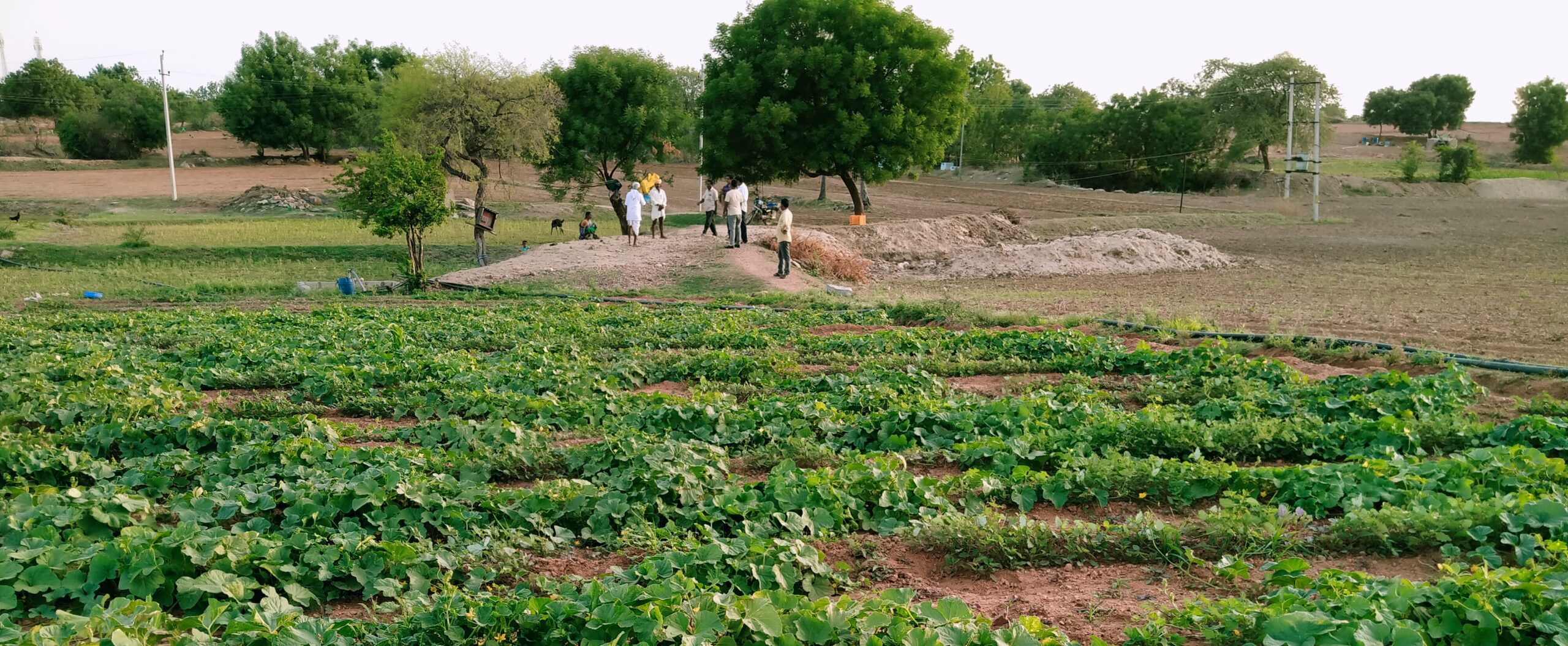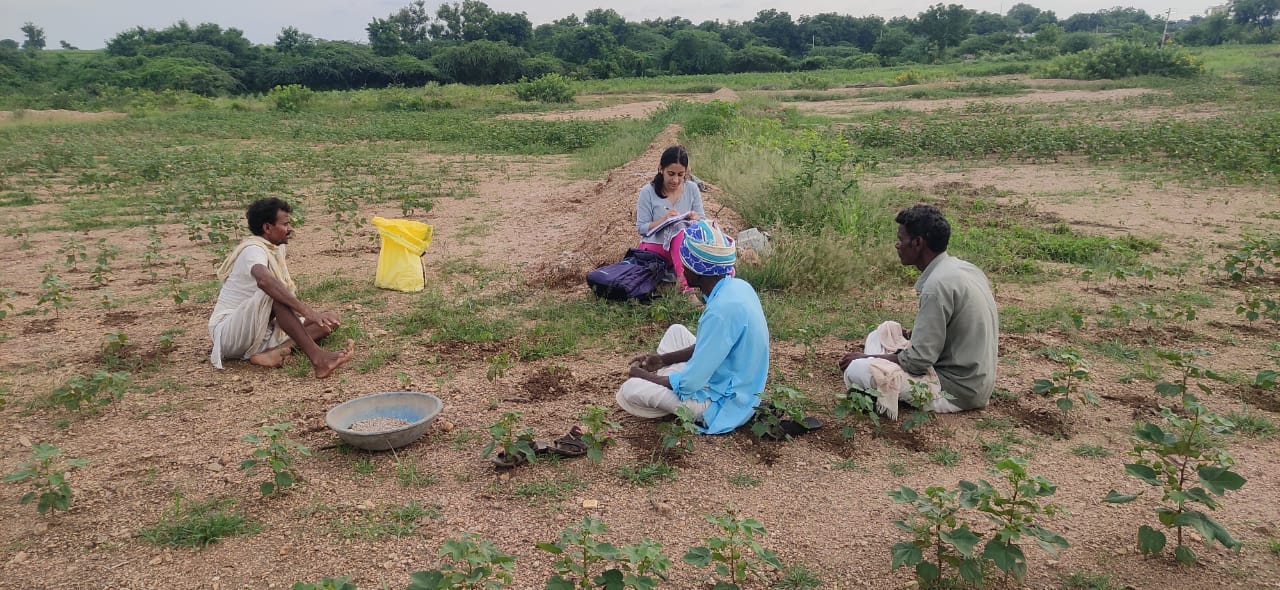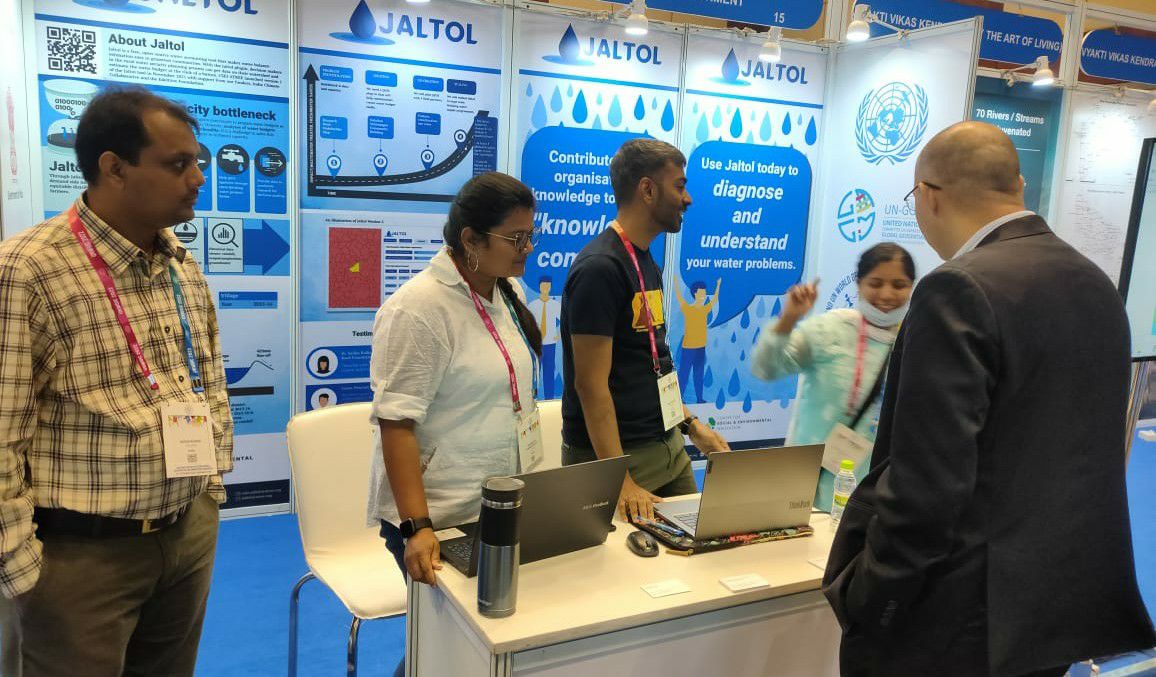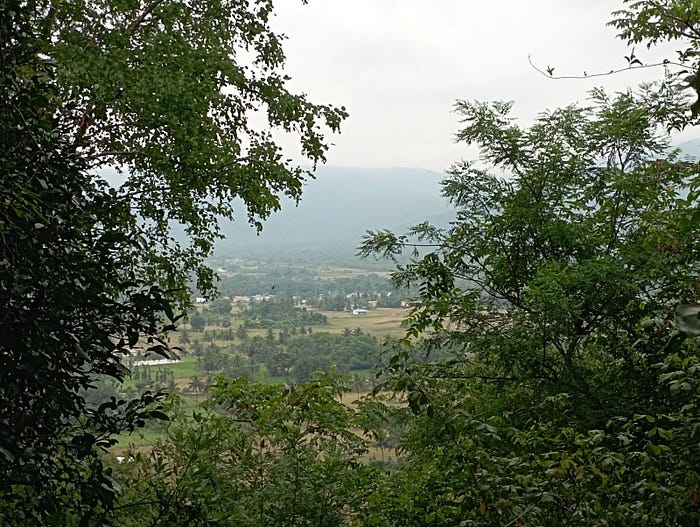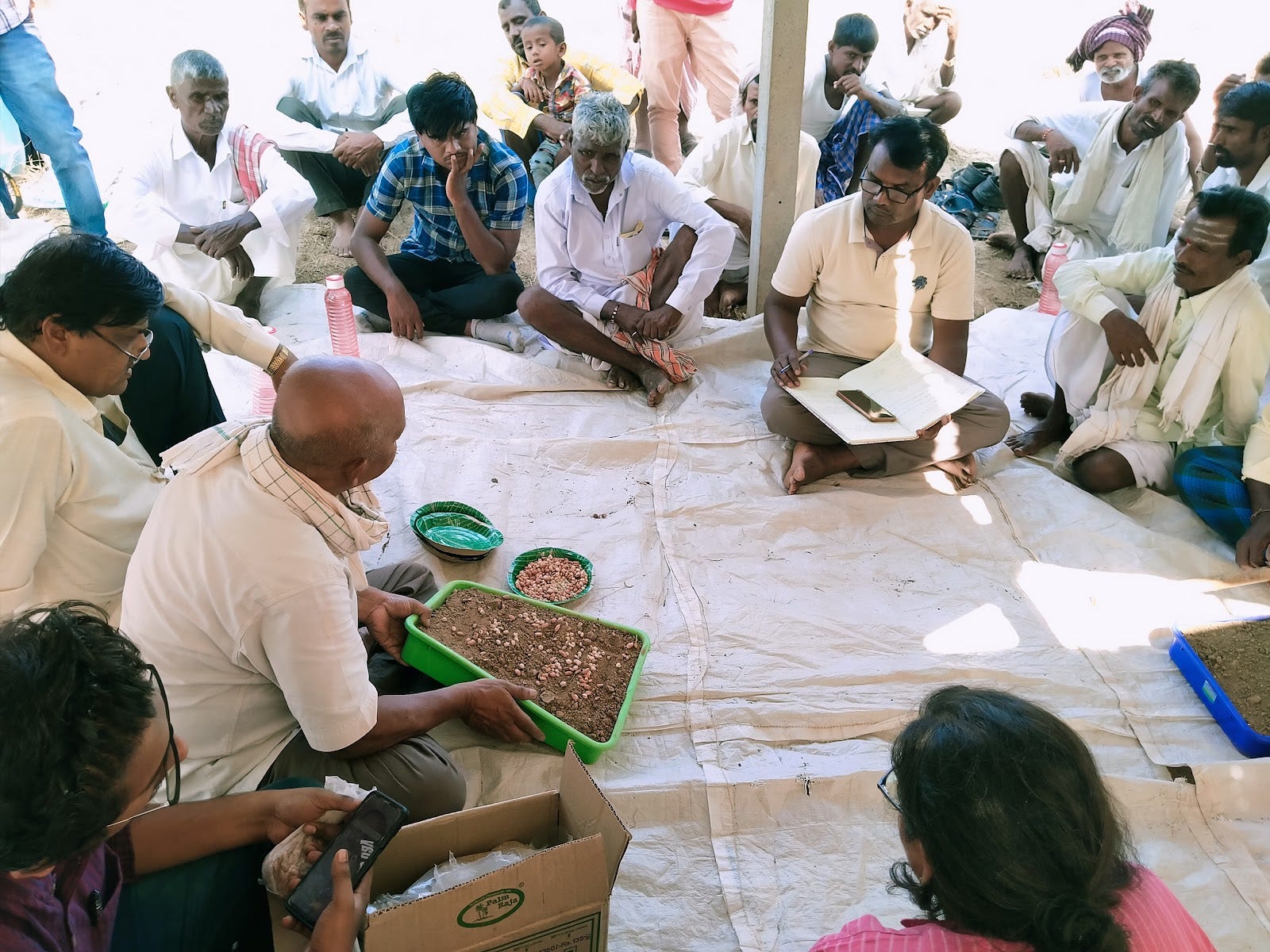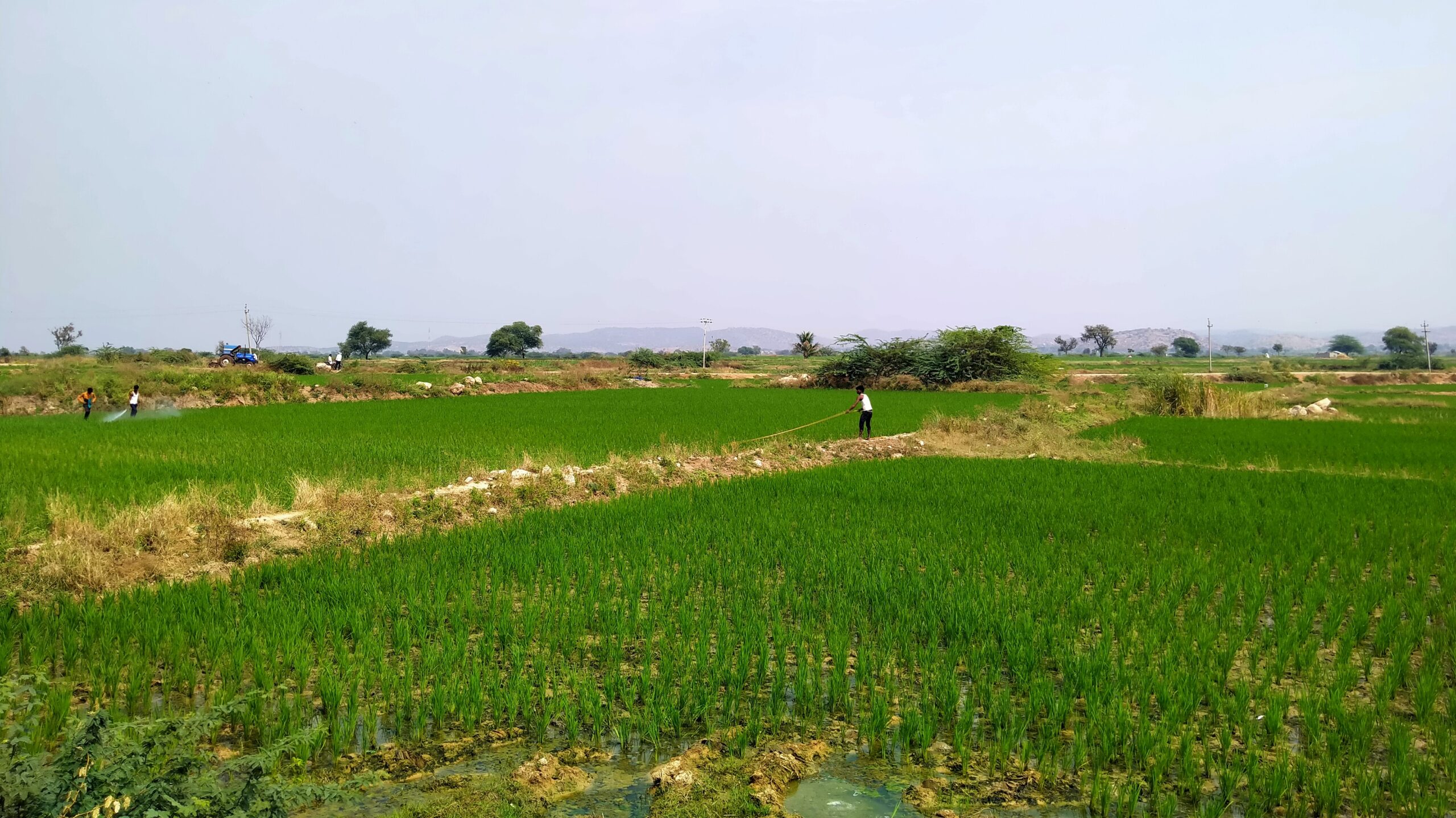Field Notes from Raichur: Why MGNREGS Remains Key for Water Conservation in Rural India
Along the edges of many farms in the northern Karnataka districts of Raichur and Koppal are hollowed-out rectangular pits called trench-cum-bunds (TCB). It’s a simple and inexpensive way to ‘catch the rainwater’; these pits stop and store sub-surface run-off, which helps with replenishing groundwater and improving soil moisture. Digging these pits is a priority under the National Rural Employment Guarantee Act, resulting in both livelihood and water security.
This is one of the bright spots we have observed during our fieldwork in Raichur. Over the last two years, we have been frequently visiting parts of the district to better understand the extent of land degradation, water insecurity, and loss of livelihoods in one of the most impoverished parts of the country. As another scorching summer depletes scarce water reserves in arid Karnataka, we document part of the important work being done to adapt to extreme weather and protect agrarian livelihoods.
MGNREGA always prioritised water conservation.
‘Water conservation and water harvesting’ was always a core part of the National Rural Employment Guarantee Act, ranking top among the list of ‘permissible works’. The Act guarantees 100 days of paid employment a year and, in the process, spurred the creation of rural infrastructure such as irrigation channels, check dams, road works, which contribute to the overall development of the village. A 2019 press release by the government said that approximately 60% of MGNREGS funds was spent on Natural Resource Management, i.e. ‘focused on ensuring higher incomes to farmers by improving both the area under cultivation and yield of crops. This is done by improving the productivity of land and increasing the water availability.’
Read | Why Jalna’s Wells Run Dry: Understanding Water and Soil in Drought-Prone Maharashtra
To meet this objective of higher farm incomes, there was a discernible shift in the kind of ‘assets’ or types of work under MGNREGA with individual assets accounting for a larger share. This means work being done on private land and not only on common land. Among the list of 155 ‘assets’ are 46 specifically for individual lands, ranging from contour bunds and farm ponds to vermi-composting and cattle sheds.
A 2019 study by the Institute of Economic Growth found that ‘individual assets’ increased agricultural productivity and income of rural households. ‘The quality of assets on individual land is perceived to be better than the assets created on community land and households are paying attention to maintenance of assets created on their own land.’ The report goes on to say that ‘individual asset creation’ improved the quality of the land and soil, directly benefiting households and yielding additional income.
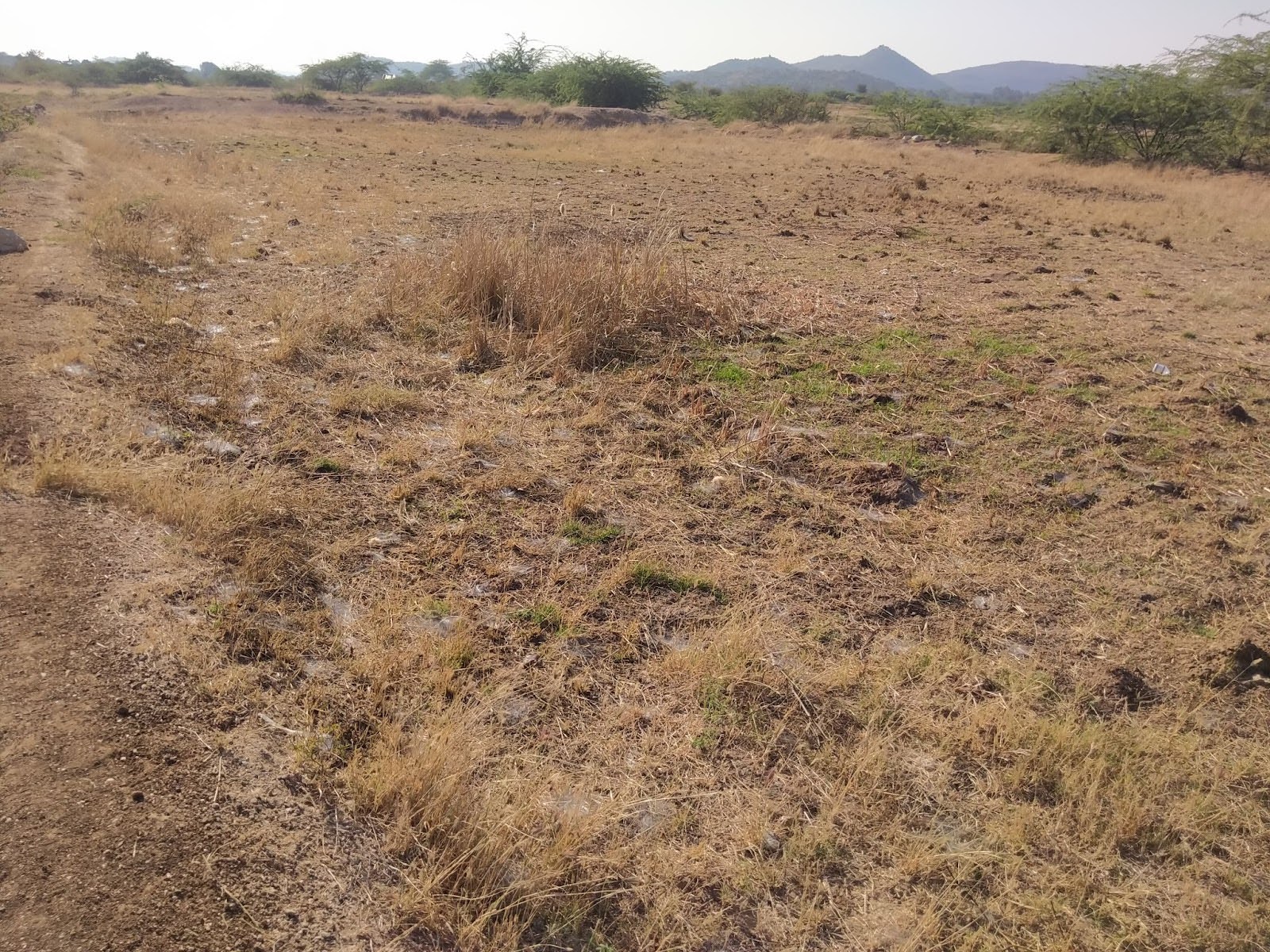
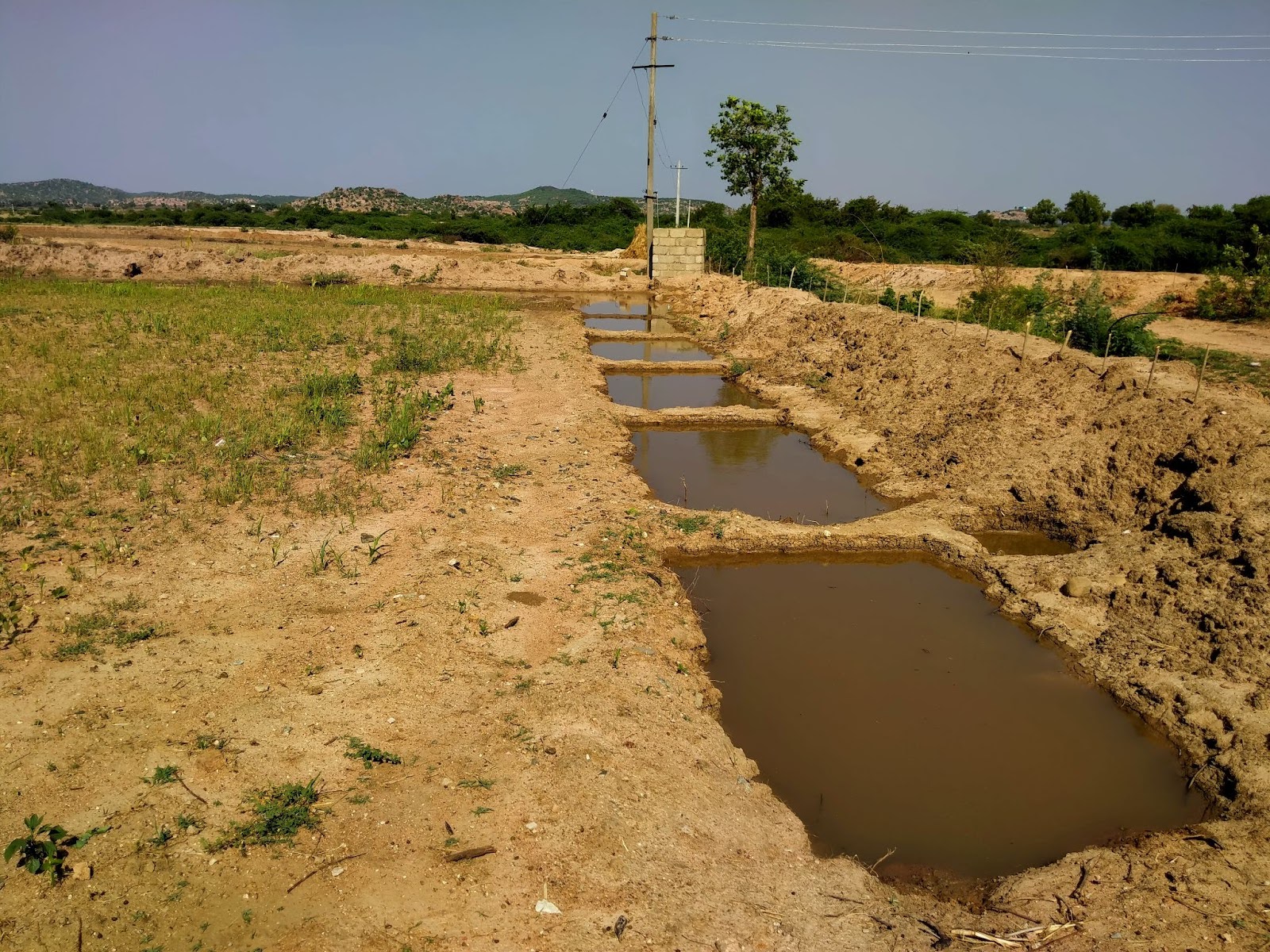
Left/Top: A section of dry, unproductive land before trench-cum-bund pits were constructed. Right/Bottom: A row of TCBs with water collected in it hem the border of the farm, preventing rainwater from flowing out and retaining soil moisture. Credit: Manjunatha G.
TCBs are an important measure to preserve soil and water
Five years on from this study, we observed the same benefits among small and marginal rainfed farmers in Raichur, the rice and cotton bowl of the state and one of the top three consumers of pesticides and fertilisers. Degradation of land is severe and widespread; a report by the Indian Space Research Organisation found that 6.96 million hectares of land in Karnataka alone was undergoing degradation.
This is a worrying statistic given that large parts of the state sustain agricultural livelihoods. The report also states that water erosion is the main cause for degradation in most parts of the country, including Karnataka, as rainfall runs off the land, carrying away with it fertile topsoil and stripping the land of agricultural productivity. This is where TCBs come in.
Right before the onset of monsoon, farmers build bunds to stem the flow of essential topsoil.
This involves raising soil embankments along the contours of the land with the excavated soil placed downstream along the edge of the trench. TCBs (used interchangeably with ‘bunds’ in this article) are one type of water management measure. Given the simplicity of the design, it can be easily adapted to different soil conditions and terrains. In places like Raichur, it is estimated to harvest around 2,700 litres of water over 2-3 months.
What’s more, these bunds also allow farmers to turn crop residue into compost.
This is crucial for rainfed farmers in Raichur who do not own cattle and thus have no access to manure. We have previously documented farmer workshops we organised with Prarambha and P. Srinivas Soil Vasu, who leads a trust dedicated to supporting farmers with improving soil quality and restoring degraded land. A key part of his workshops is training farmers on how to use a TCB to produce compost in the first half of the year, before the monsoon sets in.
Over a few months, we tracked the impact of these workshops and found that farmers yielded a cartload of compost from one TCB alone – compost from around 10 TCBs would be enough to apply on more than one acre of farmland.
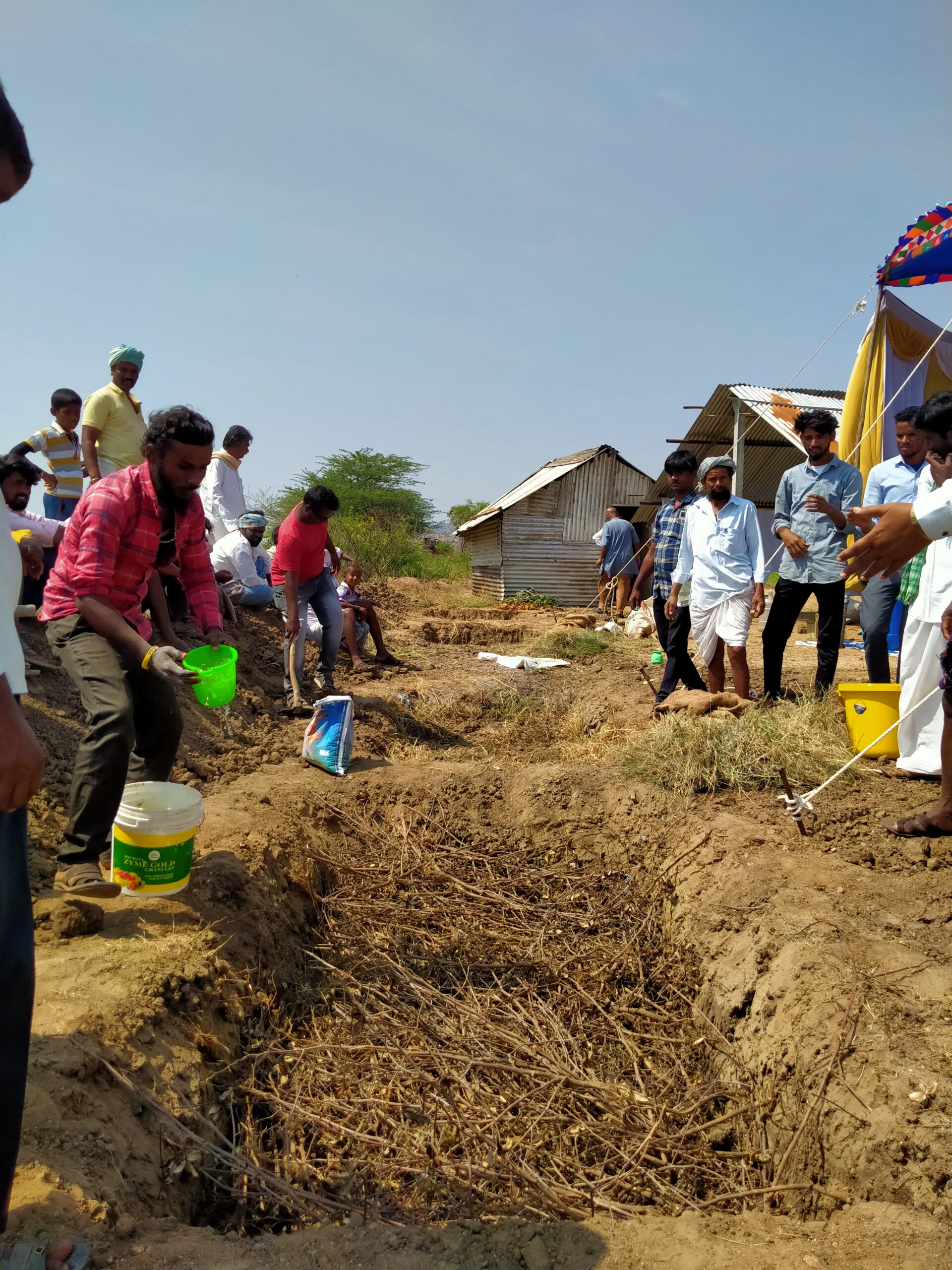
At a workshop organised by Soil Vasu, farmers learn to make compost using crop residue inside a trench-cum-bund pit.
We worked with panchayats to implement TCB and composting work under MGNREGS.
Back in 2012, WELL Labs’ grassroots partner organisation, Prarambha, constructed bunds on a three-acre farm plot in Piligunda village. The results, they say, was almost immediate as the land that lay barren for 3-4 years prior to the construction of TCBs began to show signs of recovery. The success of this intervention caught the attention of the District Chief Executive Officer who expanded it across the entire district in 2015-16. Consequently, Raichur district ranked second in the state in terms of implementing MGNREGS. The state ranked top last year for creation of work days with the construction of these pits in farmland accounting for a major part of the work.
Amarapura gram panchayat is the main site where we have observed the effectiveness of TCBs and production of organic manure firsthand. We also observed how such essential work was implemented under NREGA, which generated much-needed employment in a region beset with distress-driven migration. The work in this panchayat spanned 20 plots owned by 17 farmers in Mukkanal village. This amounted to a total of 50 acres and generated 2,600 human-days of work until July 2023.
A total of 783 TCBs were made during this time, costing Rs. 8,03,041. One of the farmers who benefitted from this is Shivappa who told us that soil erosion reduced and soil moisture improved as a result of the 37 TCBs constructed on his land. ‘We were also able to use the compost for cultivation,’ he said.
We’re looking beyond TCBs on individual lands to larger tanks and bunds on common land
That’s not all. Prarambha led another stream of work under MGNREGS, which is linked to the Narayanpur Right Bank Canal – one of the offshoots of the Upper Krishna Project, a large-scale irrigation scheme that supplies water from the Krishna river to the drought-prone regions of north Karnataka. They leveraged MGNREGS funds to benefit farm labourers, who were employed to construct a four-acre lake just beyond the canal command area to collect both rainwater and water that drains after irrigation. Though initially designed as a tank to sustain livestock and to facilitate percolation to recharge groundwater, Prarambha is now considering turning this lake into a protective irrigation system to address water scarcity during periods of low rainfall in the future.
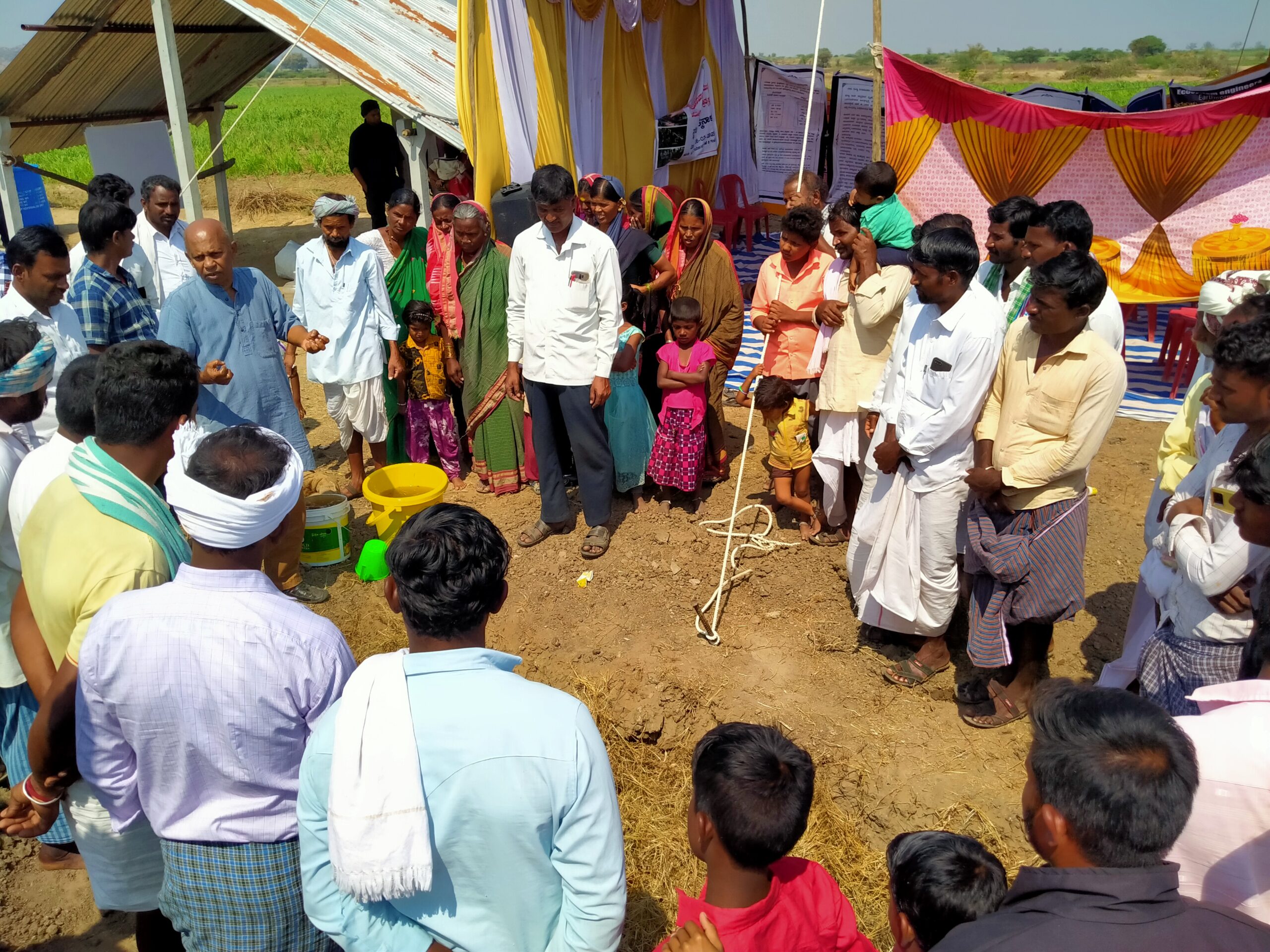
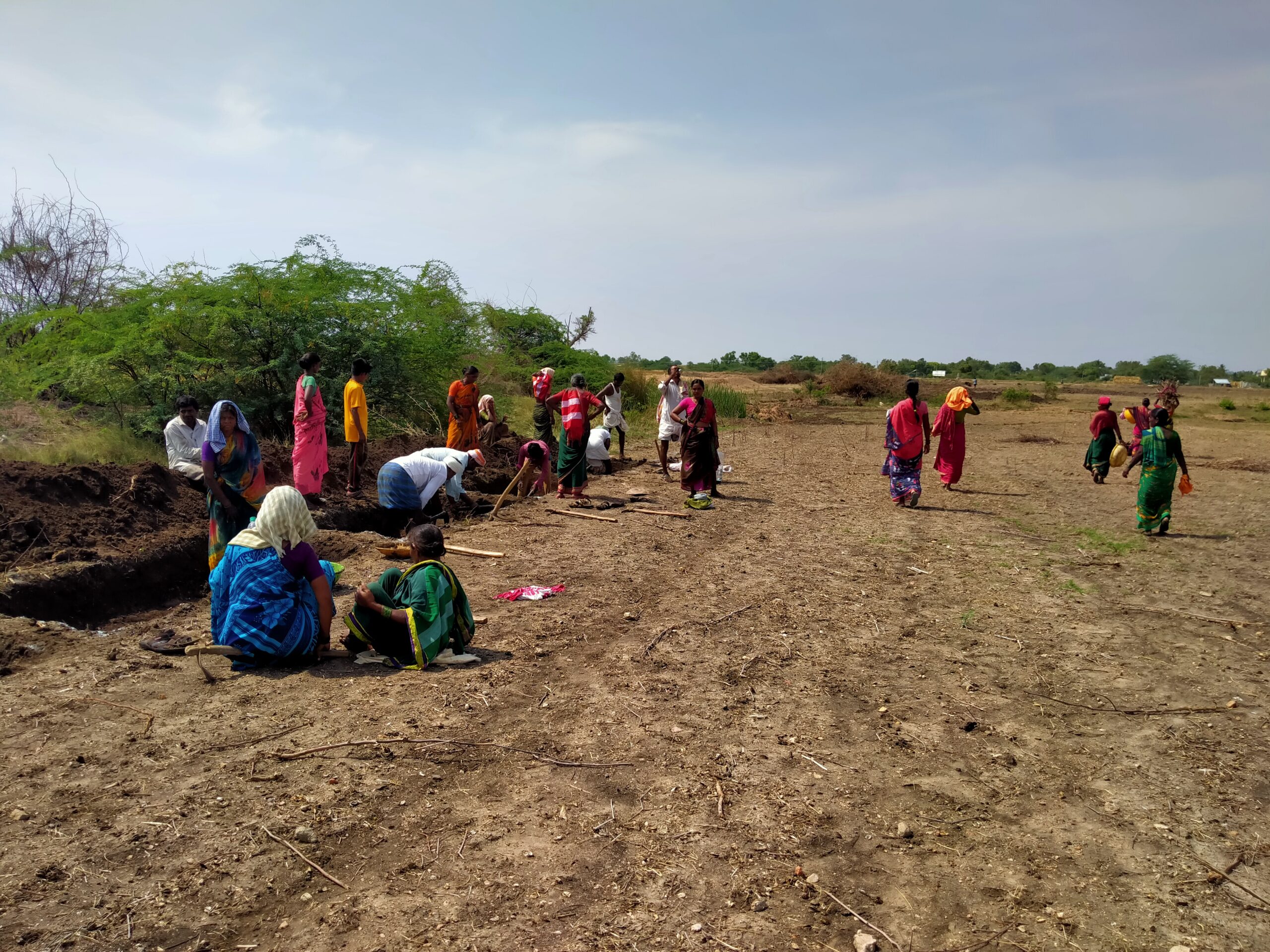
Left/Top: Farmers gather around Soil Vasu who is leading a demonstration on how to make compost using locally-available materials. Right/Bottom: Workers gather for work under MGNREGS. Credit: Manjunatha G.
One of the main focus areas of the Rural Futures initiative this year is to document the potential of protective irrigation in abating the risk of water scarcity during the summer months and crop failure. With Prarambha, we want to develop a comprehensive water-sharing plan for the drylands of Raichur and assess whether it’s possible to replenish tanks through the Narayanpur Right Bank Canal.
With access to this life-saving, albeit limited, supply of water, our hypothesis is that rainfed farmers would be able to successfully cultivate their crop and see improved incomes even during dry spells and thus be incentivised to take up more sustainable cultivation practices.
‘The MGNREGA is not simply a social security scheme to generate employment for the rural poor. It may also be the world’s largest climate change adaptation scheme,’ said the Director of the Centre for Science and Environment, Sunita Narain, in connection with a project CSE had done to document the impact of the scheme across 15 states. This statement is accurate in the arid fields of Raichur, where MGNREGS was pivotal in driving water and soil conservation efforts.
It yielded direct benefits in terms of wages during times of drought and the pandemic. It also resulted in more long-term impacts, with the state of the soil and farm improving enough for farmers to cultivate better and earn more. We will continue to monitor this work being spearheaded by Prarambha and local authorities, and explore ways to improve them.
With inputs from Kaavya Kumar and Syamkrishna P. Aryan
If you would like to collaborate, write to us. We would love to hear from you.
Follow us and stay updated about our work:

